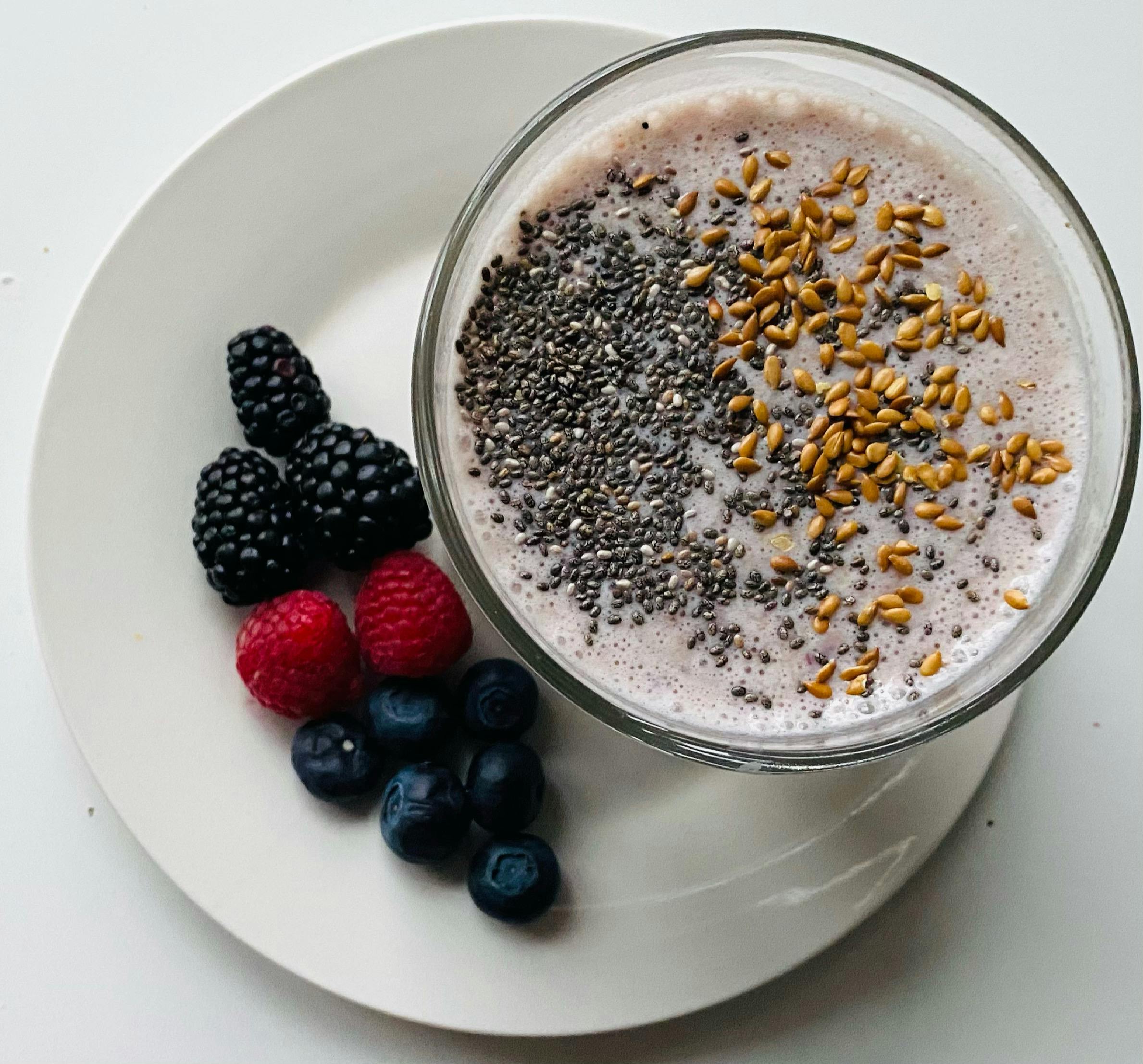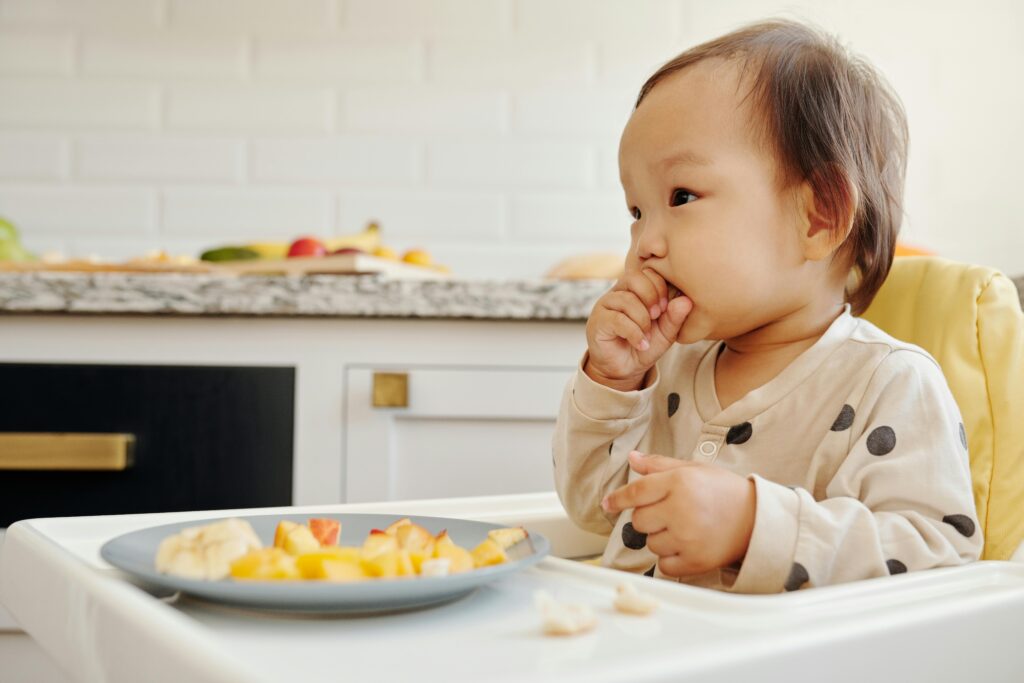Feeding your baby is one of the most challenging yet the most important part of parenthood. As your baby grows, their nutritional needs evolve, and introducing the right food at the right time can support healthy growth and development. This guide will walk you through each stage of your baby’s food journey, offering insights into what to feed them, when, and how to ensure they get the essential nutrients they need. As babies grow, their dietary needs change, and knowing what to feed them at different ages can help them develop strong bones, healthy organs, and a resilient immune system. Here’s an age-based nutrition guide to help you navigate what food to introduce to your baby and when.
Here is a detailed table for what babies and toddlers should eat according to their age group, up to 3 years, incorporating locally available foods:
Baby Growth Food Chart:
| Age | Type of Food | Examples of Foods | Feeding Guidelines |
| 0–6 M | Breast Milk/ Formula | Breast milk, formula | Feed on demand, no solids |
| 4–6 M | First Solid (Optional) | Cereal, mashed veg/fruits | Start purees; watch for allergies |
| 6–8 M | Expanding Solids | Fruits, veggies, cereals | 2–3 meals/day, thicker textures |
| 8–10 M | Finger Foods | Soft fruits, cooked veggies | 3 meals + snacks; self-feed |
| 10–12 M | Family Foods | Soft veggies, grains, eggs | 3 meals + snacks; whole milk |
| 12–18 M | Family Meals | Family foods, fruits, lentils | 3 meals + snacks; balanced |
| 18–24 M | Independent Eating | Family meals, soft snacks | Avoid choking hazards |
| 2–3 Y | Balanced Meals | Family meals, fruits, proteins | 3 meals + snacks, variety |
The First 6 Months: Breast Milk or Formula:

From birth to 6 months, your baby’s primary source of nutrition should be breast milk or formula. According to the American Academy of Pediatrics (AAP), breast milk is the ideal food for newborns due to its perfect balance of nutrients and antibodies, which helps protect against infections and diseases. If breastfeeding isn’t an option, infant formula is the best alternative, providing all necessary nutrients for healthy growth.
– Exclusive breastfeeding is recommended for the first six months.
– Formula-fed babies should be fed an iron-fortified formula.
– There’s no need for water, juice, or solid food at this stage as babies can’t process them yet.
Signs Your Baby is Getting Enough Milk:
– They seem satisfied after feeding.
– They have 6–8 wet diapers and 3–4 bowel movements daily.
– Steady weight gain is observed during check-ups.
4 to 6 Months: Introducing Solid Foods (Optional):

Around 4 to 6 months, babies start showing signs that they’re ready for solids. The signs include sitting up with support, showing interest in food, and the ability to move food from a spoon into their throat.
At this stage, solids are meant to complement breast milk or formula, not replace it. The first foods should be easy to digest and free from added salt or sugar.
First Foods to Introduce:
| 1. Single-grain cereals- iron-fortified, like rice or oatmeal |  |
| 2. Vegetables puree- like carrots, sweet potatoes, and peas |  |
| 3. Fruits puree- like apples, bananas, and pears |  |
| 4. Meats puree- optional but iron-rich meats like chicken are good |  |
2. Vegetables puree- like carrots, sweet potatoes, and peas
3. Fruits puree- like apples, bananas, and pears
4. Meats puree- optional but iron-rich meats like chicken are good
How to Introduce:
– Start with one type of food at a time and wait 3–5 days before introducing another to monitor any potential allergies.
– Feed in small amounts (1–2 teaspoons to start) and gradually increase as your baby gets comfortable.
– Offer solids once a day initially and then increase to 2–3 times a day as your baby becomes more accustomed to eating.
6 to 8 Months: Expanding the Diet:

As your baby grows, their digestive system matures, allowing them to handle a wider variety of foods. Solids should complement, not replace, breast milk or formula at this stage.
Foods to Introduce:
- Mashed fruits and vegetables: You can now offer a variety of fruits like mango, papaya, and pear, and vegetables like spinach, potato, peas, beetroot, and pumpkin. These are rich in vitamins and minerals essential for growth.
- Cereals and grains: Continue offering rice, ragi, oats, and suji (semolina). You can also introduce soft khichdi made with rice and lentils (dal).
- Pulses and legumes: Mashed moong dal and masoor dal are excellent sources of protein.
- Iron-fortified foods: Iron is vital for brain development, so continue with iron-fortified cereals and consider introducing pureed meats or egg yolk if desired.
Feeding Tips:
- Offer 2-3 solid meals per day while continuing to breastfeed or give formula.
- Increase the consistency of the food to be thicker and lumpier to encourage chewing.
8 to 10 Months: Finger Foods and Self-Feeding:

As babies become more skilled at handling food, you can start offering finger foods that they can grasp and feed themselves. This helps develop their fine motor skills and encourages independence.
Foods to Include:
1. Soft Fruits and Vegetables: Offer bite-sized pieces of well-cooked vegetables (carrots, broccoli, sweet potatoes) and soft fruits (bananas, peaches, melons).
2. Grains: Small pieces of bread, pasta can be introduced.
3. Meat and Fish: Small, well-cooked, and finely chopped pieces of meat, chicken, or fish.
4. Dairy: Continue with plain yogurt and cheese but avoid introducing whole milk until after 12 months.
Texture and Feeding Tips:
– Encourage self-feeding with finger foods, but always supervise to avoid choking.
– Offer a variety of tastes and textures to expose your baby to different flavors.
– Make sure the pieces are small enough for your baby to chew and swallow.
Feeding Schedule: Around 3 meals and 2 snacks per day is typical, with continued breast milk or formula feeding.
10 to 12 Months: Transition to Family Foods:

By 10 to 12 months, babies can eat most family meals as long as they are soft and cut into small, manageable pieces. At this stage, the focus should be on ensuring a balanced diet that includes fruits, vegetables, grains, and proteins.
Foods to Include:
- Vegetables: Offer well-cooked vegetables like cauliflower, lauki (bottle gourd), turai (ridge gourd), palak (spinach), bhindi (okra), and brinjal (eggplant).
- Grains and cereals: Your baby can enjoy roti, rice, dalia (broken wheat), upma, and vegetable pulao. These provide essential carbohydrates for energy.
- Protein: Include dal, khichdi, paneer, tofu, and well-cooked pieces of chicken or fish.
- Fruits: Continue offering a variety of fruits like mango, apple, pear, chikoo, banana, and watermelon.
- Dairy: If your baby tolerates it, you can introduce whole milk after the first birthday. Continue with yogurt and cheese.
Feeding Tips:
- Offer 3 meals and 2 snacks per day, along with water for hydration.
- Focus on providing meals that are rich in iron, calcium, and other essential nutrients.
12 Months and Beyond: Moving to Table Food:

From the age of 1 to 3 years, toddlers should be eating balanced meals similar to what the rest of the family consumes, though with fewer spices and salt. A well-rounded diet at this stage ensures healthy growth, brain development, and good eating habits.
Foods to Include:
- Grains and cereals: Continue offering rice, roti, paratha, poha, and upma. These can be paired with dals, curries, and vegetables.
- Vegetables: Serve a variety of vegetables such as carrot, potato, pumpkin, cauliflower, palak, lauki, and brinjal. Ensure that they are cooked and cut into small pieces.
- Protein: Include dal, chana (chickpeas), rajma (kidney beans), paneer, tofu, eggs, and chicken. These are important for muscle development and overall growth.
- Fruits: Toddlers should have fruits like mango, banana, orange, pear, apple, chikoo, and grapes. These provide essential vitamins and fiber.
- Dairy: Serve whole milk, curd, paneer, and cheese daily to meet their calcium needs for healthy bones and teeth.
Feeding Tips:
- Encourage self-feeding with a spoon and fork.
- Offer 3 main meals and 2 snacks per day.
- Ensure that your child drinks plenty of water throughout the day.
Conclusion:
Feeding your baby the right food at each stage of growth is crucial for their physical, cognitive, and emotional development. By following an age-based food introduction plan, you ensure your child receives the necessary nutrients while fostering healthy eating habits. From exclusive breastfeeding in the early months to introducing single-grain cereals, mashed fruits, and vegetables at six months, and eventually transitioning to family foods by the age of one, this journey is a critical phase for your baby.
Remember, every baby is unique, and feeding practices should be guided by their individual needs, preferences, and any potential allergies. Patience and consistency are key as your baby adapts to new foods and textures. Always consult with your pediatrician for personalized advice and guidelines specific to your child.
By following the outlined age-based nutrition plan, you’re setting the foundation for a healthy, happy, and thriving child!
FAQs:
1. When should I start feeding my baby solids?
Babies are typically ready for solids between 4 to 6 months. Look for signs like sitting up with minimal support, showing interest in food, and losing the tongue-thrust reflex, which means they can move food to the back of their mouth to swallow.
2. How do I know if my baby has a food allergy?
When introducing new foods, especially common allergens like eggs, dairy, peanuts, and fish, offer one food at a time and wait for 3–5 days before introducing another. Signs of allergies can include rash, vomiting, diarrhea, or breathing difficulties. If you notice any of these, contact your pediatrician immediately.
Babies are typically ready for solids between 4 to 6 months. Look for signs like sitting up with minimal support, showing interest in food, and losing the tongue-thrust reflex, which means they can move food to the back of their mouth to swallow.
3. What foods should I avoid in the first year?
– Honey: It can cause infant botulism, a rare but serious illness.
– Cow’s milk: Avoid until after 12 months as it’s difficult for babies to digest.
– Choking hazards: Such as whole nuts, popcorn, grapes, hot dogs, and raw carrots.
– Added salt and sugar: Babies’ kidneys aren’t fully developed to process large amounts of sodium, and added sugars should be avoided.
4. How much water should my baby drink?
Once your baby starts solids, you can introduce small amounts of water (2–4 ounces per day). Before solids, babies typically get enough hydration from breast milk or formula.
5. Should I give my baby juice?
It’s best to avoid juice, especially in the first year, as it can lead to excessive calorie intake, tooth decay, and a preference for sweet flavors over healthier options.
6. What if my baby is a picky eater?
Picky eating is common, especially around 1–2 years of age. Keep offering a variety of healthy foods, but don’t force them to eat. Make mealtimes relaxed and positive, and try offering new foods alongside familiar favorites to increase the likelihood of acceptance.
7. Can I introduce spices and seasonings to my baby’s food?
Yes, but it’s best to start with mild flavors like cinnamon or cumin. Avoid salt, sugar, and overly spicy foods. Introducing a variety of flavors can help expand your baby’s palate as they grow.
8. what food can I give to baby during cold and cough?
- For a baby with a cold or cough, focus on easy-to-digest, soothing foods like breast milk, warm water, mashed fruits, vegetable purees, lentil soup, soft rice, khichdi etc. with full of nutrients.
- Avoid cold and spicy food.
For guidance on your child’s development, you may refer to our blog, A Month-by-Month Guide to Your Child’s Development.

